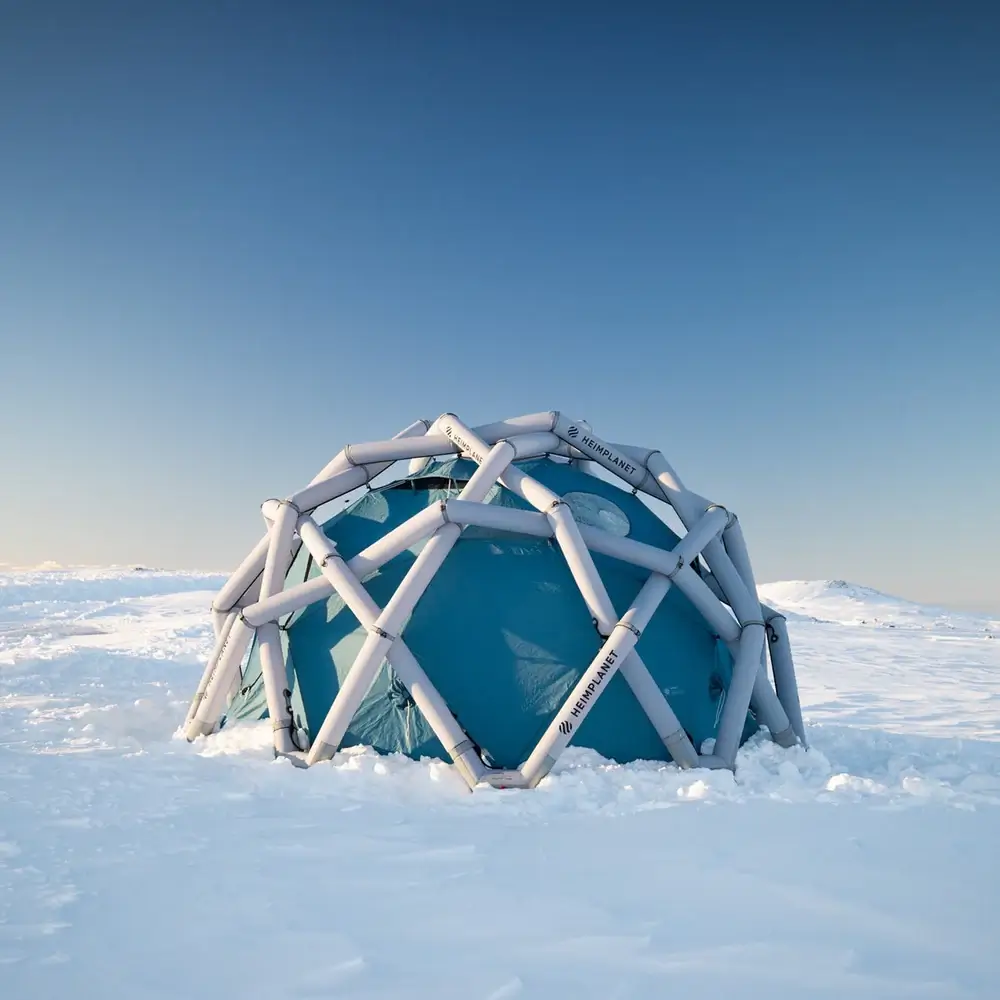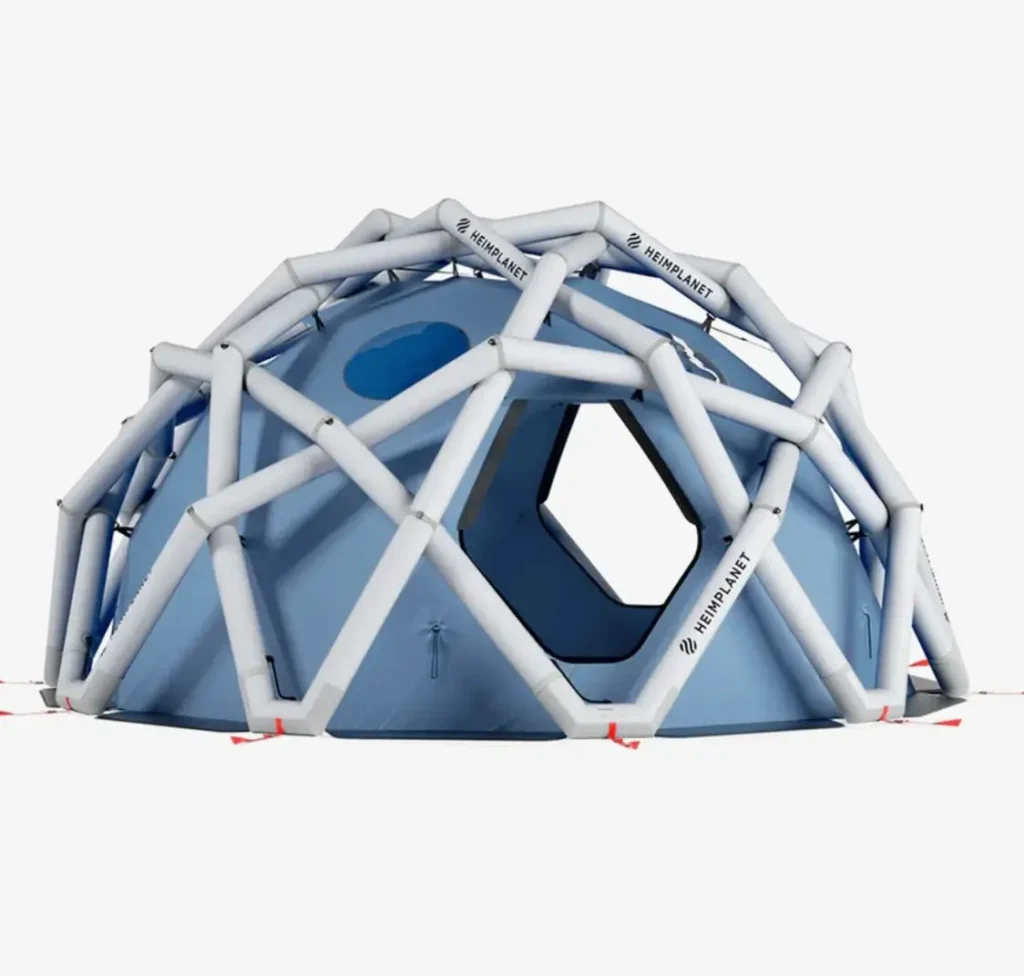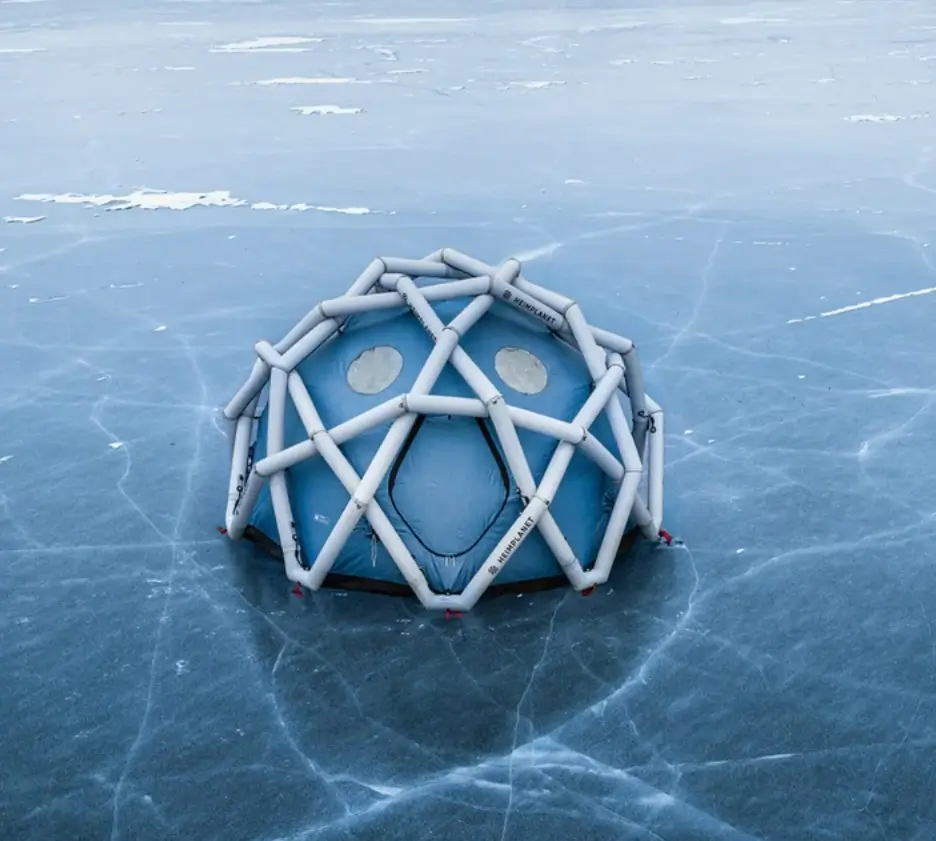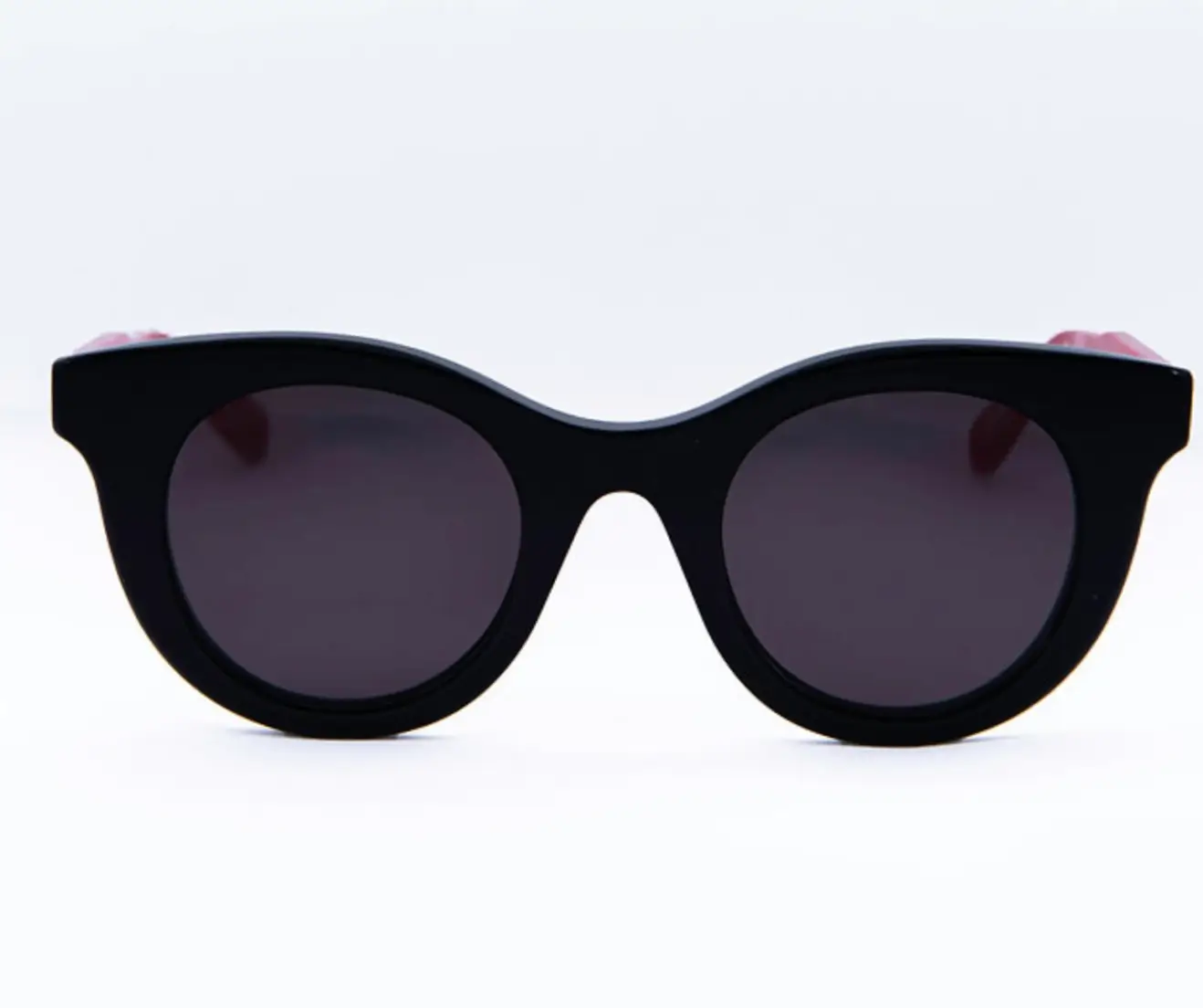built
There are camping tents, expedition tents, and then there is MAVERICKS, an inflatable, geodesic, multi-purpose shelter designed not for leisurely weekends, but for the places where weather becomes an adversary and nature becomes a test of human intention. Created for extreme environments and proven in some of the harshest wind conditions recorded in outdoor sport, this tent functions as a base camp, a group shelter, and a pressure-tested structure capable of resisting forces that would shred or snap traditional pole-based systems. In a world where adventure continues pushing outward into colder, higher, wetter, and wind-stricken borders, MAVERICKS represents a new archetype: a shelter that does not merely protect from the elements, but anticipates them.
geodesic
The defining feature of the MAVERICKS tent is its inflatable geodesic framework, a structural format engineered to withstand wind speeds of up to 180 km/h. Unlike aluminum or carbon poles that can warp, fracture, or collapse under lateral stress, the inflatable beams flex, absorb, and redistribute force without failure. This is not a recreational convenience but a functional requirement, developed through a design logic rooted in physics, expedition history, and performance under duress. It is the difference between a tent as a leisure object and a tent as a survival tool.
architecture
With an interior height of two metres and a floor space exceeding 13 square metres, MAVERICKS extends beyond the scale of personal camping and into the realm of mobile architecture. It becomes a meeting space, a staging area, a repair station, a warm-up shelter, or a communal command hub. In extreme windsurfing events, polar crossings, research deployments, and remote filming environments, it exists not as a place to sleep but as a place to operate. That alone separates it from the market of consumer outdoor gear. MAVERICKS is built for teams, for organised missions, for professionals who require stability where landscapes shift unpredictably.
rapid
What elevates the tent further is its capacity for rapid erection by a single person. The inflation-based construction eliminates the need for synchronized pole assembly, tension alignment, or multi-hand coordination. In situations where time is not just convenience but safety—approaching storms, failing light, dropping temperatures—minutes matter, and MAVERICKS answers that urgency. Inflation becomes a structural act. The tent rises, forms, and stabilises without the complexity traditionally associated with large-scale shelters. One person can build it, maintain it, and break it down, making it as efficient as it is imposing.
proven
The tent’s notoriety was cemented through its use in the RedBull Storm Chase, widely referred to as the most extreme windsurfing challenge in the world. The event selects only the most violent, punishing wind systems and sends athletes into conditions most sailors would never willingly approach. Waves hammer the coastline, gusts reach devastating speeds, and the environment becomes a spectacle of raw elemental collision. MAVERICKS was not merely present—it was depended upon, serving as a structural anchor point in a landscape defined by chaos. Its durability under those circumstances transformed it from a technical innovation into a symbol of trust.
resil
Wind resistance is only part of its resilience. The fabric composition, reinforced seam engineering, and multi-point inflation chambers create a protective envelope that resists tearing, puncturing, and abrasion. The tent’s geometry contributes to its thermal and acoustic stability, minimising rattling, slapping, and flapping that typically signal both stress and wear. It shelters occupants not just from weather but from psychological strain. Anyone who has spent nights in howling winds understands the value of silence, or at least the closest possible version of it when the world outside is roaring.
gear
In expedition culture, equipment becomes identity. The tools one carries, deploys, and depends upon communicate experience, seriousness, and preparedness. MAVERICKS aligns itself with athletes, crews, researchers, and explorers for whom failure of shelter is not an inconvenience but a threat. There is a legacy in gear that survives rather than deteriorates, and MAVERICKS situates itself in that lineage. It is the tent for the person who cannot afford to wonder whether their tent will hold.
idea
Despite its extreme resilience, MAVERICKS maintains an elegant profile. The inflated beams form a sculptural lattice, recalling the curves of aerospace structures, rescue craft, or temporary architecture at the boundary between industrial and organic forms. There is a visual softness to its aerodynamic body, but also an assertiveness in its grounded stance. From a distance, it looks less like a tent and more like a self-contained habitat, a temporary refuge for teams operating on the outer edge of the map.
interior
Inside, the tent feels unexpectedly spacious. The two-metre standing height removes the crouch and crawl dynamic common in expedition tents. The wide floor plan accommodates equipment, tables, repair kits, electronics, clothing layers, heating units, hydration systems, camera crates, or group briefings. It is a space that transforms depending on purpose, shifting from rest zone to strategy room to emergency shelter.
portable
The portability of the tent enhances its practicality. When deflated, the structure compresses into a transportable pack that can be moved by vehicle, sled, boat, or aircraft depending on field context. It is not the lightest tent on the market, but weight is not its defining metric. Integrity is. In environments where gram counting is secondary to survivability, MAVERICKS positions itself correctly. It is equipment that earns its mass through its reliability.
culture
The cultural shift toward inflatable architecture in the outdoor sector has accelerated in recent years, but MAVERICKS stands as one of the earliest and most authoritative examples of what the approach can enable. Instead of being dismissed as novelty, inflatable engineering has been recognised as a superior solution in high-wind dynamics, load absorption, and rapid deployment. The tent helped pioneer that acceptance, demonstrating that inflatable does not mean delicate, temporary, or recreational.
relev
As climate unpredictability increases and adventure tourism expands into harsher territories, gear like MAVERICKS becomes relevant beyond the niche. High winds, flash-weather systems, and unstable seasonal patterns affect coastal campers, mountain hikers, and festivalgoers alike. The line between extreme and ordinary conditions narrows each year, and a tent capable of surviving the RedBull Storm Chase suddenly becomes a valid consideration for anyone who refuses to cancel plans when the forecast shifts.
fin
MAVERICKS represents a convergence of engineering, athletic culture, expedition utility, and architectural imagination. It is a structure that proves inflatable design can surpass pole systems not only in convenience but in raw survival capability. It offers space, safety, adaptability, and authority in a single form, and its proven real-world performance elevates it beyond marketing language.
No comments yet.










